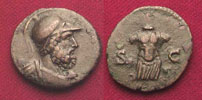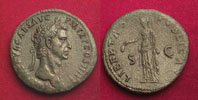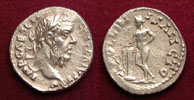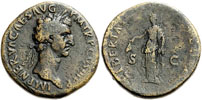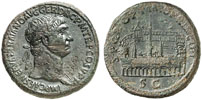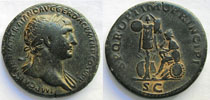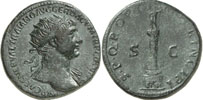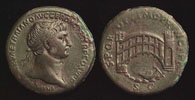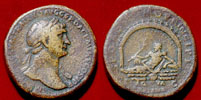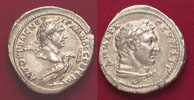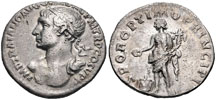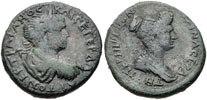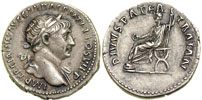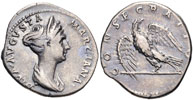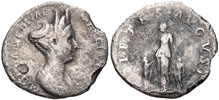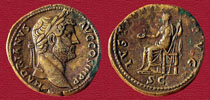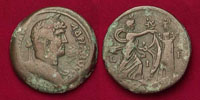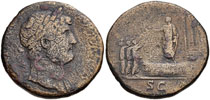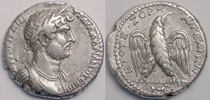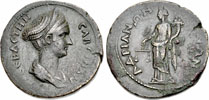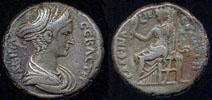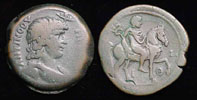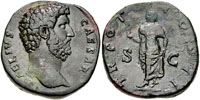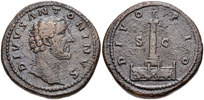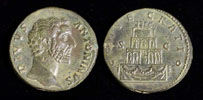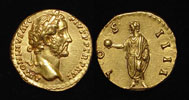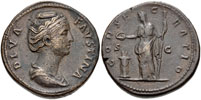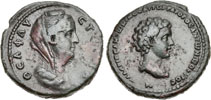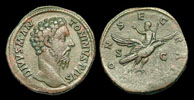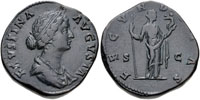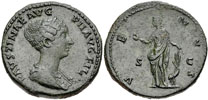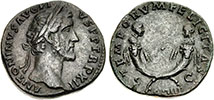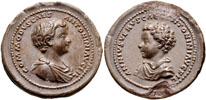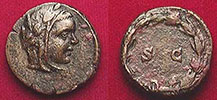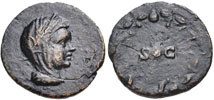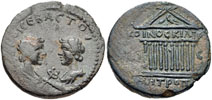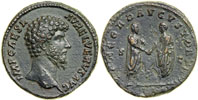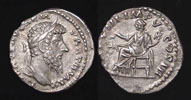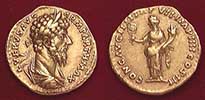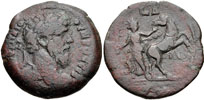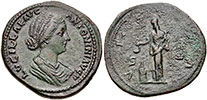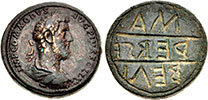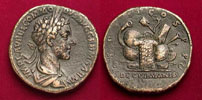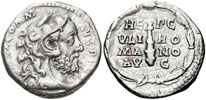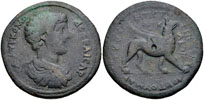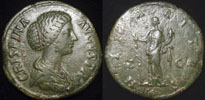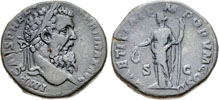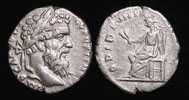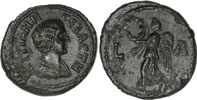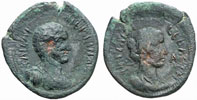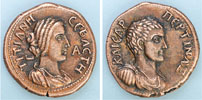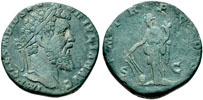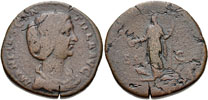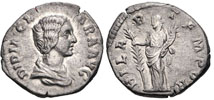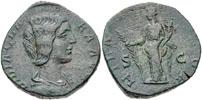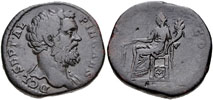|
PERTINAX JR. , son of Pertinax. Tetradrachm, Alexandria 193, billon ~12.75 g. KAI[C]AP [ΠEPTINAΞ] Bare-headed and draped bust r. Rev. Nike advancing l., holding wreath with both hands; in field, L - A. Cohen 1. Dattari 3980 (these dies and possibly this coin after cleaning). BMC Supp. 3124. Förschener 790. Exceedingly rare, apparently only five specimens known. Minor areas of porosity, very fine
Considering Pertinax Junior was the son of the short-reigned emperor Pertinax, it is surprising that his story is carried beyond his fathers murder on March 28, A.D. 193. But it was only at that point that his life story began.
Two great strokes of fortune were awarded to Pertinax Jr.; the first was that his father denied the senate's request to bestow upon him the title of Caesar, believing that no title should be awarded until it had been earned. Pertinax Junior's apparent lack of formal involvement in his father's regime probably spared him execution when his father's regime was overthrown by the praetorian guards. The fact that very rare coins were struck for him in Egypt may only reflect imperfect communication between officials in Rome and Alexandria.
His second episode of good luck was the fact that Septimius Severus, who had marched on Rome and caused the overthrow of Pertinax's successor Didius Julianus, lavished the highest honours - including consecration - on Pertinax. Since the new regime held steady for nearly two decades, this made Pertinax Jr. eligible for various privileges and honours, including being placed in charge of the sacerdotal (priestly) college.
But the environment in the imperial palace of the Severans was poisoned by sibling rivalry; the emperor's sons Caracalla and Geta were so hateful of each other that it would have been impossible for anyone to remain on good terms with both brothers. For better or worse, Pertinax Junior became close friends with Geta, which meant he was among the perhaps 20,000 'allies' of Geta (though Dio may be exaggerating) who paid with their lives after Caracalla murdered Geta near the end of 211.
Though Caracalla's purge was personal, it was also political. Others who fell were the praetorian prefect Papinian and Pompeianus and Cornuficia, respectively a grandson and a daughter of Marcus Aurelius. Caracalla eliminated all possible rivals who had a record of hostility toward him, and Pertinax Junior could not have been far from the top of the list. Especially by killing those with imperial blood in their veins, he was reducing the risk of the opposition finding a suitable candidate to lead a coup. Commentary and photos courtesy NAC.
LOOKING FOR AN EXAMPLE OF THIS COIN. PLEASE CONTACT US IF ONE IS AVAILABLE.
|
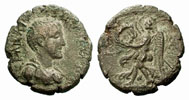
|
